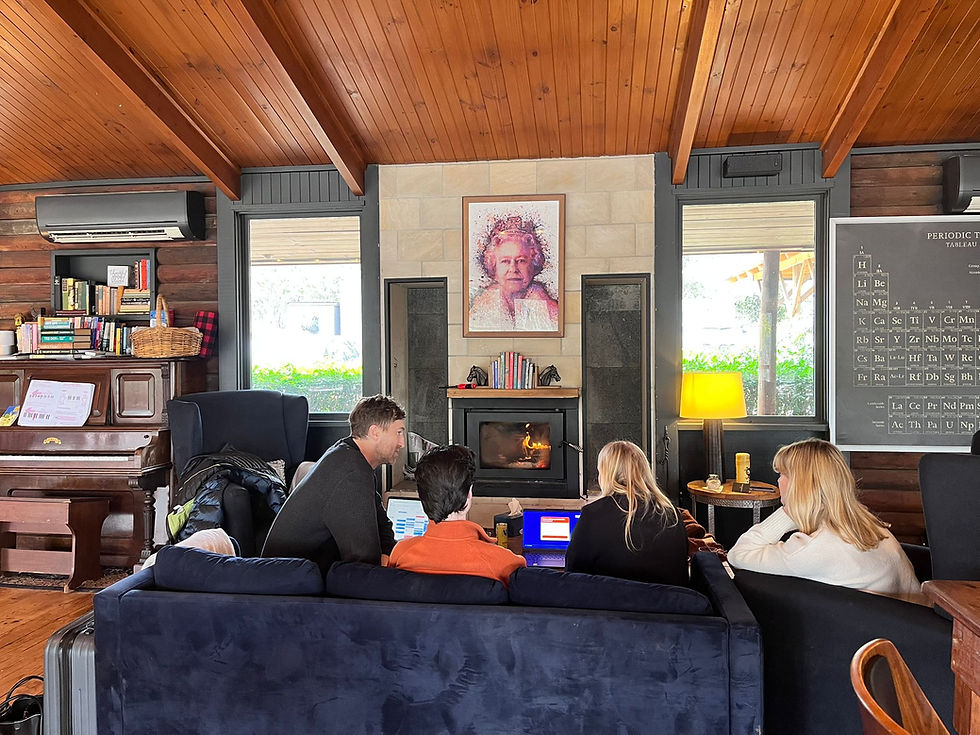What the 2025 Benchmarking Reports Mean for Fundraisers: Our Key Takeaways
- Jeremy Bennett
- Jul 30
- 3 min read
The 2025 Essentials Benchmarking Reports for Australia and New Zealand bring a wealth of validation to the work we do day-to day.
At Bigfoot Fundraising (BFF), the reports reinforce what we already prioritise: high-value donor relationships, smarter onboarding journeys, and the long game of Gifts in Wills.
Here’s a breakdown of the insights that matter most—and how they shape our work:
Australia: Where Strategy Meets Validation
Retention is Still King
73% of Individual Giving income came from retained donors
Donors who stay (especially SG and RG) deliver the most stable revenue
Without strong and strategic onboarding journeys and ongoing engagement strategies, digital-acquired donors remain the most at risk of attrition.
What it means for us: We double down on onboarding, second gift, and upgrade journeys, especially for digital donors. Clean data and long-tail journeys are non-negotiables.
Meta-First Doesn’t Mean Journey-Last
Digital is dominating acquisition for Single Giving and Community Events, but it comes at a cost: higher attrition, lower contactability, and rising CPAs.
Strong post-click journeys, segmented messaging, and creative that builds trust and long-term intent.
Landing Pages Matter More Than Ever
Poor UX and weak data capture kill contactability.
F2F and TM still perform best in terms of usable contact data.
Actionable tip: We design mobile-first, straight-forward forms and add smart validation (email/phone) and micro-conversions (surveys, SMS opt-ins) to keep donors engaged post-donation.
Gifts in Wills Are Booming
GIW income is up 63% in 5 years, with pledgers skewing younger.
51% of confirmed pledgers are still actively giving.
We’re on it: Tailored dual-track journeys (active donor + legacy lead) are essential. Early lead gen via Meta is worth the investment if paired with long-term nurturing.
Donor Value > Donor Volume
SG is the fastest-growing stream (+51%).
High-value gifts ($1k+) make up 54% of income.
Most income comes late in the campaign cycle.
Our strategy: Prioritise value growth by focusing on mid-value upgrades, personalised donor cultivation, and loyalty-building initiatives. Structure campaigns to align with peak giving periods.
New Zealand: Confirming the Right Focus
Retention Dominates Income
Up to 88% of giving comes from retained/reactivated donors.
Digital-acquired cohorts underperform without strong journeys.
Implication: We design year 1 journeys that convert, especially for SG donors. SMS and phone comms boost performance for younger, digital-first audiences.
Meta Needs Smarter Stewardship
Digital SG gifts are higher ($86 vs. $79 for DM), but long-term value lags.
Younger donors = lower retention and more fragility.
Our play: Meta KPIs should include retention and engagement—not just CPA. Creative must guide the donor to a next step, not just the donation page.
UX and Data Capture Still Hold the Key
Digital acquisition leads to poor contactability.
Attrition often comes from shallow first engagement.
We respond with: Optimised forms, progressive profiling, and journeys that immediately reinforce donor value and purpose.
GIW: Bigger, Younger, Stronger
GIW income is up 129% and now makes up 44% of IG income.
Younger pledgers = longer stewardship = more potential.
We act by: Segmenting GIW journeys by age and giving type. Soft asks, storytelling, and long-tail engagement are more effective than hard forms alone.
Forecasting Must Follow Value
Regular Giving is flat in real terms.
SG and mid-value gifts are leading growth (+44%).
Recommendation: Invest heavier in final 7–10 campaign days and revisit RG acquisition strategies, particularly F2F.
Why the Australian Report Hits Harder
While the NZ report backs our direction, the Australian data gives us sharper tools. It provides:
Granular insights into first gift values, mid/major donor impact, and ROI.
Specific acquisition mix breakdowns by channel.
Generational insights for journey tailoring (e.g. Gen Z vs Boomers).
Better contactability diagnostics by channel.
In short, the Australian report strengthens the strategic frameworks we already rely on - value-led journeys, contact data hygiene, dual-track bequest strategies, and smarter acquisition modelling.
To summarise, The 2025 Essentials Benchmarking Reports are less about shocking revelations and more about validation. They tell us what we suspected and offer proof points that help refine our strategy, support client recommendations, and keep us ahead of the curve.
If you’re planning your next campaign or looking to sharpen your approach to GIW, Meta, or mid-value giving, let’s talk. We’re already applying these insights—and we’d love to help you do the same.
Download the full benchmarking report here.



